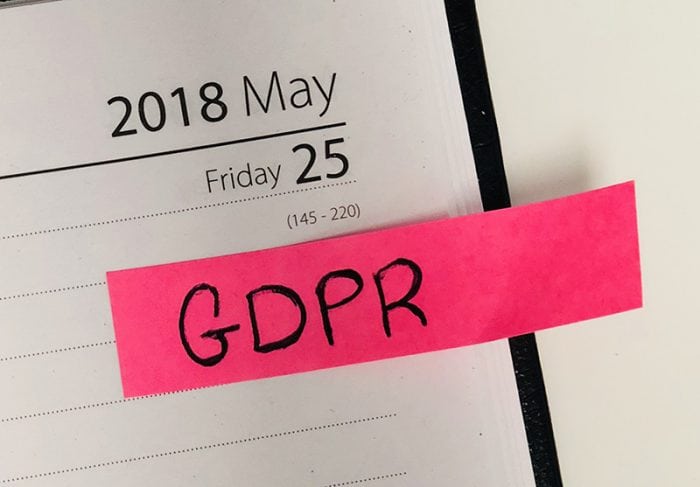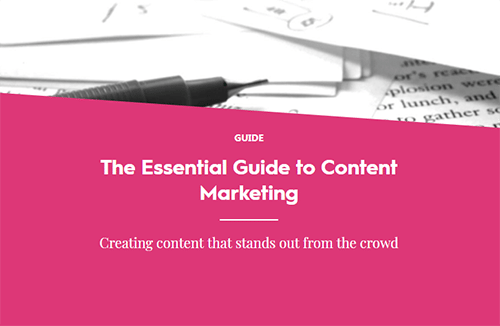So, this is GDPR. Based on the state of my inbox, I’m not convinced it’s made the difference most people expected it to. The reality is, we’re still in limbo. Much like the Cookie Law before it, things won’t change until they absolutely have to. Until someone takes that first big fine, GDPR isn’t going to feel as important as it really is.
At Coast Digital, we’ve taken a proactive approach – both with our own marketing and with the campaigns we run for our clients. We’re not waiting to see who gets punished and for what. Instead we’re looking at ways to differentiate our campaigns and find new advantages in the world of digital marketing post-GDPR.
Content marketing post-GDPR
One of the key tenets of GDPR is the concept that data isn’t currency – requiring a prospect to hand over their data in exchange for a product or service is no longer acceptable.
Gone are the days of forcing people to hand over their name, email address, phone number, job title, mothers maiden name and whatever else in exchange for your guide or factsheet.

The fact we can’t force users to hand over their data in exchange for content now is, if anything, just taking work out of our hands – previously all that would happen is that users that wanted the content but not the contact would give us false information, adding dead leads to our numbers that would later just have to be removed anyway.
Incentive to exchange
The reason content marketing has always been a strong approach – and the reason it represents a powerful tool in the post-GDPR era – is that it gives users relevant to your offering an incentive to interact with you.
It allows you to capture your target audience throughout the funnel, ranging from building awareness with those for whom this piece of content is their first interaction, to reinforcing your credibility for those that are already considering your offering.
While we can no longer require data in exchange for our content, by making the quality of the content we are offering clear, we give users more reason to want to hand it over. Furthermore, we know that those that do opt-in are highly engaged – after all, they’ve chosen to be contacted rather than it being forced on them.
Good content creates quality interactions
So, what makes content marketing the antidote to your GDPR woes? It’s simple really – even in the ‘worst case’ scenario, your content can still work hard for you.
Let’s say you’ve paid to drive traffic onto a landing page. Users click the ad and fill out your form, but then opt-out of marketing communications. What then?
If we’re running a content marketing campaign, then they will still get their hands on our content. ‘Even worse!’ you might think. I would disagree.
We’ve put all this time, effort and budget into getting that click – which outcome would we rather have? A dead lead or a prospect with your branded, high-quality, useful content in front of them?
Quality content is vital
The most important thing to take away here is that we need our content to leave an impression. Some see the form fill as the end goal for any marketing campaign – in the context of content marketing, that means thinking that, once we have the prospect’s data, it doesn’t matter how good the asset we give them is. I believe that was incorrect pre-GDPR and is an even more critical mistake to make now.

The power of the pitch
One of the best things about content post-GDPR is that it allows us to encourage, and possibly even incentivise, future interactions from the prospect within the content itself.
After consuming your useful, insightful content that user will, hopefully, have a positive impression of your brand and in all likelihood be more open to your offering.
By ending your content with a simple, clear explanation of how your services relate to the topic of the content and why it would be worth their time to contact you, you can create the opportunity for a warm in-bound lead – a far better position to be in than cold calling someone who downloaded the guide, hasn’t yet read it and wasn’t really interested in hearing from you anyway.
As I mentioned, you can even incentivise this – offer people who’ve read the guide something in relation to the topic. A free consultancy session, for example. You could even give them a promo code or trigger phrase to use when they get in touch, both adding a sense of exclusivity and giving you a way to keep track of who has been driven in by the content in the long term.
On that note…
We’re committed to content as the answer to GDPR – it’s how we promote ourselves, and we’ve seen it work for many of our clients. If you’re struggling to rebuild your marketing strategy post-GDPR, then we’d love to help.
Find out more about our approach to content marketing, or get in touch today and let’s talk about how content can make your GDPR worries a thing of the past.
We’ve also got a content marketing guide, which you can download for free here:

